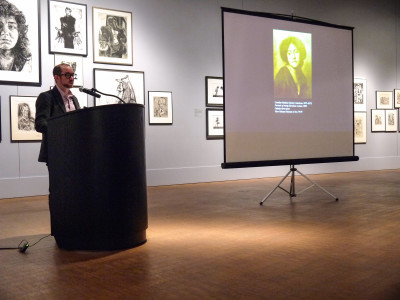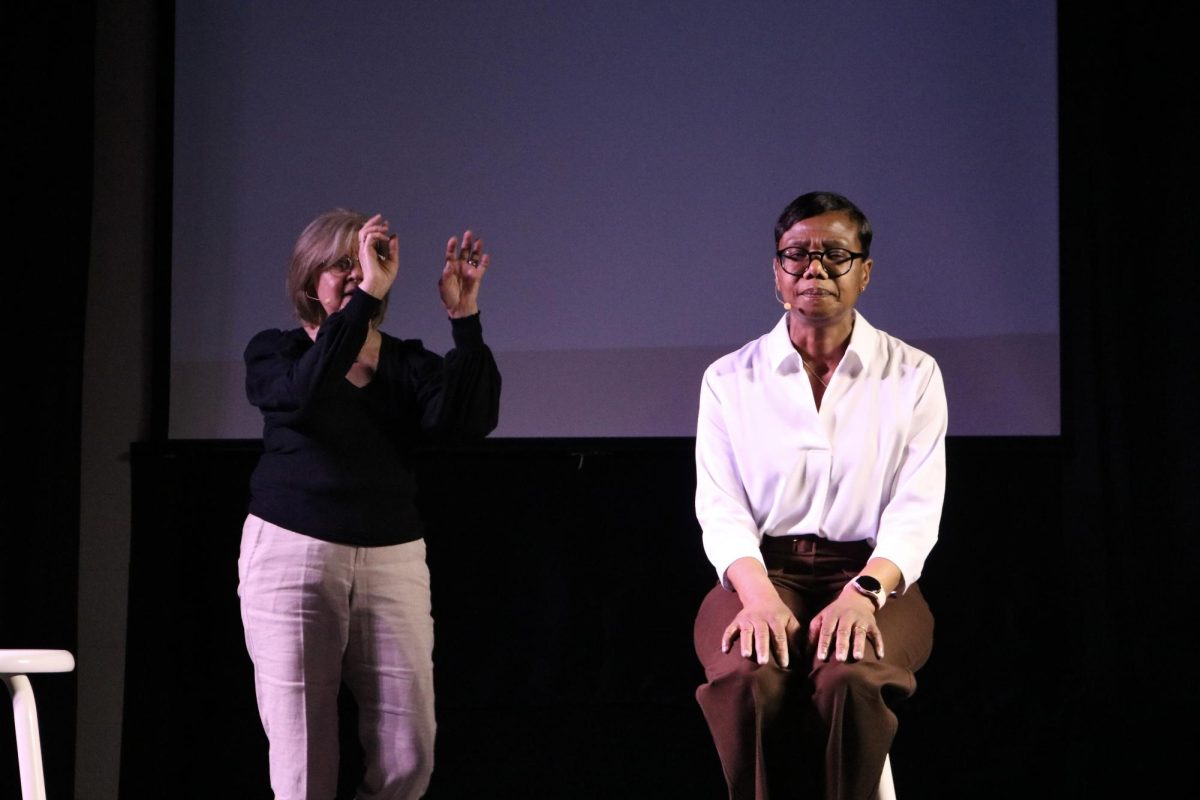
Last Monday, Feb. 9, Faulconer Gallery welcomed Russell Lord, the curator of photographs at the New Orleans Museum of Art, to give a talk on Gordon Parks’ photographs. Parks’ work, which is currently on display in the gallery, includes many photographs and original issues of Life magazine, in which the photographic essay “Harlem Gang Leader” was published.
Parks was the first black photographer to work for Life. While developing his essay, he worked closely with his subject, Leonard “Red” Jackson, the leader of a Harlem gang. Lord spoke about Parks’ project extensively, offering unique insight into the process through which Parks’ story was morphed into the iconic final publication.
“Gordon Parks’ first photo essay for Life magazine was, in some ways, not Gordon Parks’ photo essay at all,” Lord said. “And the context in which these dramatically altered images were presented distorted or confused the message that I think he intended.”
Lord explained the process by which the editorial team tried to form the photographs into a narrative, revealing the frequent cropping and alteration of Parks’ work at the hands of Life magazine’s editors.
“At each step of the selection process—as Parks chose each shot, or as the picture editors chose from his selection—any intended narrative was complicated by another editorial voice,” Lord said. “When readers opened the pages of the magazine, the addition of text and the readers’ own biases further rendered the original argument into a fractured, multilayered affair. The process raises questions: What was the intended argument? And whose argument was it?”
Lord recounted an incident where Jackson himself, in response to reading the publication, made a joking comment to Parks about how he had been made to look like a “criminal.”
The photographs displayed in the exhibit evoke powerful emotions, capturing the innumerable struggles and duties of Jackson’s role as a gang leader. Lord spoke highly of a few photographs that showed Jackson in the intimate context of family life alongside a number of images which depicted him riding around town in the back of a Buick convertible. These photographs were part of a major story that Parks photographed, which was almost completely scrapped before going to print.
Lord also discussed how Parks’ career with Life progressed following this essay in a way where his own editorial input grew broader, expanding beyond photography to include written work. Over time, Parks’ style evolved to be more consistent with mainstream journalistic representation.
Lord concluded the talk by mentioning that ironically, Jackson had, in fact, outlived Parks despite his bleak portrayal as a “Harlem Gang Leader.”
“The Making of An Argument” will remain on display in Faulconer Gallery until March 15.

















































